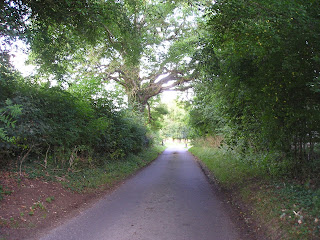On Tulips
The story of the craze for tulips in the 17th century, Tulipomania, is well documented and oft repeated. Suffice to say, that favoured, single tulip bulbs were selling for thousands of pounds/dollars before the tulip ‘bubble’ crashed. Today, we are fortunate in having many hundreds of varieties in an unimaginable range of colours and forms to choose from and at remarkably low prices.

Over the years, my work has taken me to gardens of all sizes and styles, from formal parterres attached to country estate houses to ‘pocket handkerchiefs’, to planting thousands in grassland to planting a score or less in pots. It has given me the opportunity to experiment with colour as well as variety. Below are some of my favourites.

The formal parterres of this Victorian Italianate garden (by Charles Barry, designer of the Houses of Parliament) required very restrained planting both in colour and quantity. Here, I used the variety ‘Spring Green’, which stands well even in harsh weather conditions. After flowering, the bulbs were lifted and dried off to be replanted again later in the year. It is always desirable to do this as it helps to prevent disease and deterioration of the bulbs. In practice, it is often easier just to leave them and add a few additional bulbs each autumn to bulk up the numbers, especially when time is short.

Also in a large estate garden but at the opposite end of the style and colour spectrum, three thousand red (‘Bing Crosby’) and white (‘Diana’) tulips were planted on a meadow bank. Tulips when planted in grassland deteriorate very rapidly – to maintain this display new bulbs were added each year. However, they do look very beautiful when grown this way – try the almost black tulip ‘Queen of Night’ with blue Camassia bulbs for a magical combination.
Even when planting smaller beds, cramming in as many bulbs as is possible between other plants makes for a beautiful display. This stunning border was only one metre wide and four in length but there was still room to have plenty of early colour from ‘Purple Prince’ and the lighter ‘Candy Prince’.
For formal displays a bed of tulips takes a lot of beating. They can be single coloured as in this image of pink tulips under-planted with yellow wallflowers (seen at Glasnevin Botanic Gardens in Dublin, Ireland) or mixed colours and planted so densely that no other plants were necessary or desirable (seen at Lismore Castle, Ireland).

For those of us with limited space and budgets, tulips grown in pots are ideal for we can still cram the bulbs in to give a magnificent display. The images below show how the first layer of bulbs are placed before a second layer is planted above them. Avoid planting directly over the first bulbs by leaving their tips showing – this will give the bulbs space to develop with much better results. Top up the plants with potting compost and nature will do the rest; it couldn’t be simpler! I like to use the more ‘exotic’ looking varieties in pots as the blooms, by being lifted closer to the eye, give more opportunity to admire their spectacular detail.

Perhaps the easiest of all tulips to grow are the wild species* and their varieties. Their delicacy of size belies their toughness. If they like you, they will increase in number year after year.

Tulipa ‘Peppermint Stick’

Tulipa acuminata
All tulips benefit from being planted as late in the year as possible, November is ideal but even if later they will still flower. The pot grown ‘Green Eyes’ were planted mid-January this year and have just finished flowering. They will be planted in the garden in due course to flower again next spring.

Tulip ‘Green Eyes’
In England, tulips are flowering at their best right now: take the opportunity to visit open gardens to see which ones you like best. Make notes of their names so that you can order the bulbs when the catalogues drop through the letter box mid-July.
*always ensure that any bulb is purchased from a reputable source and have not been gathered from the wild.


Comments
Post a Comment